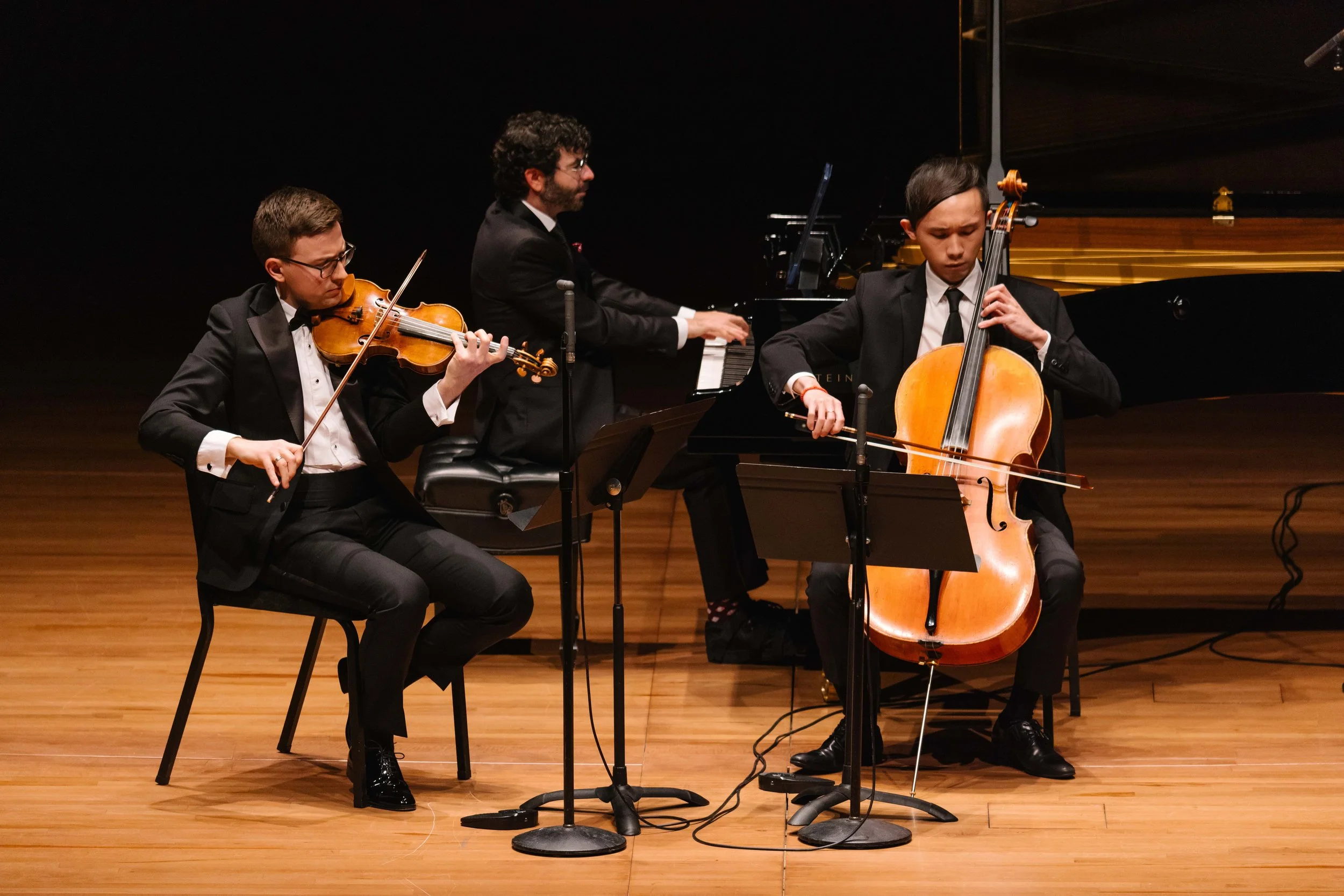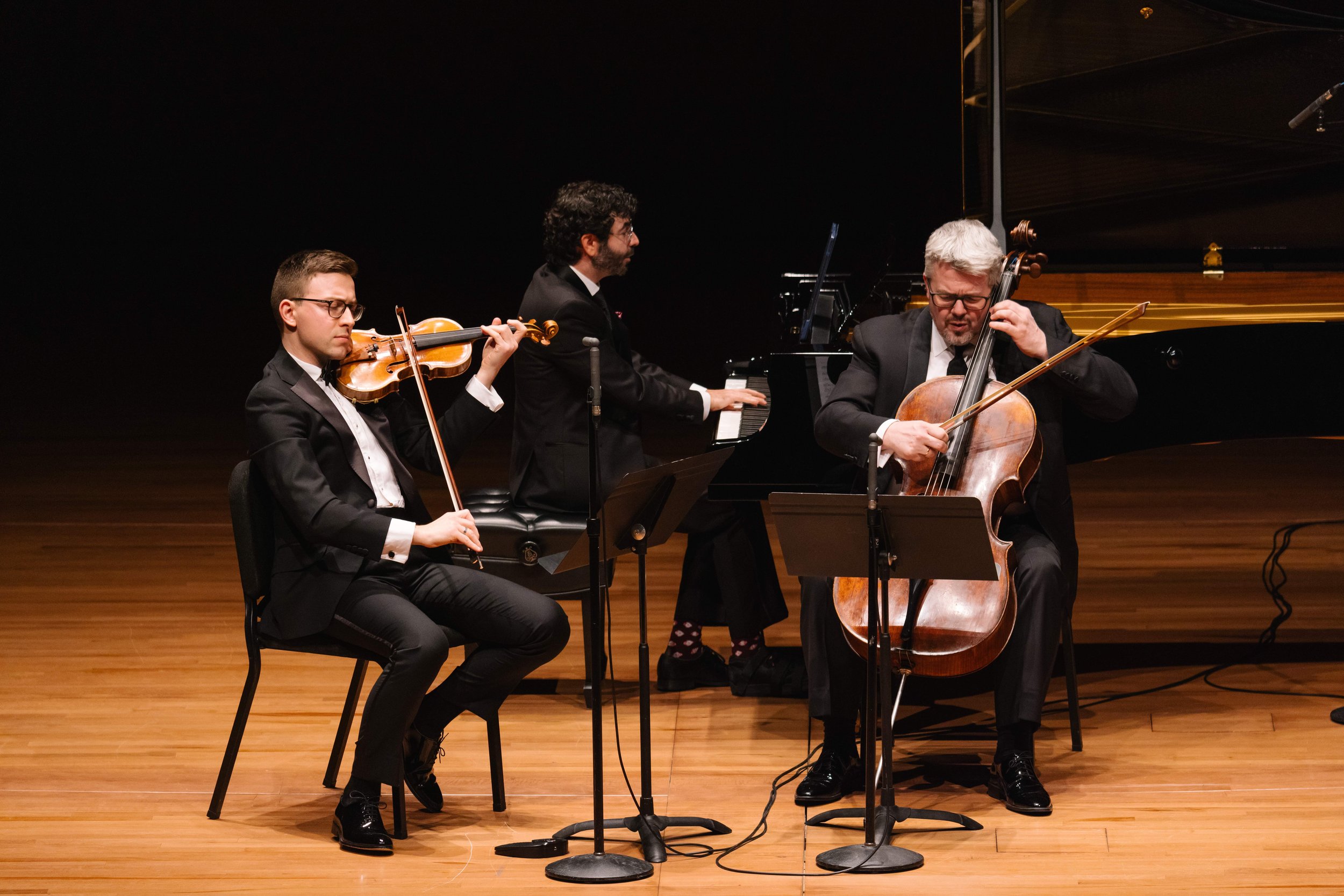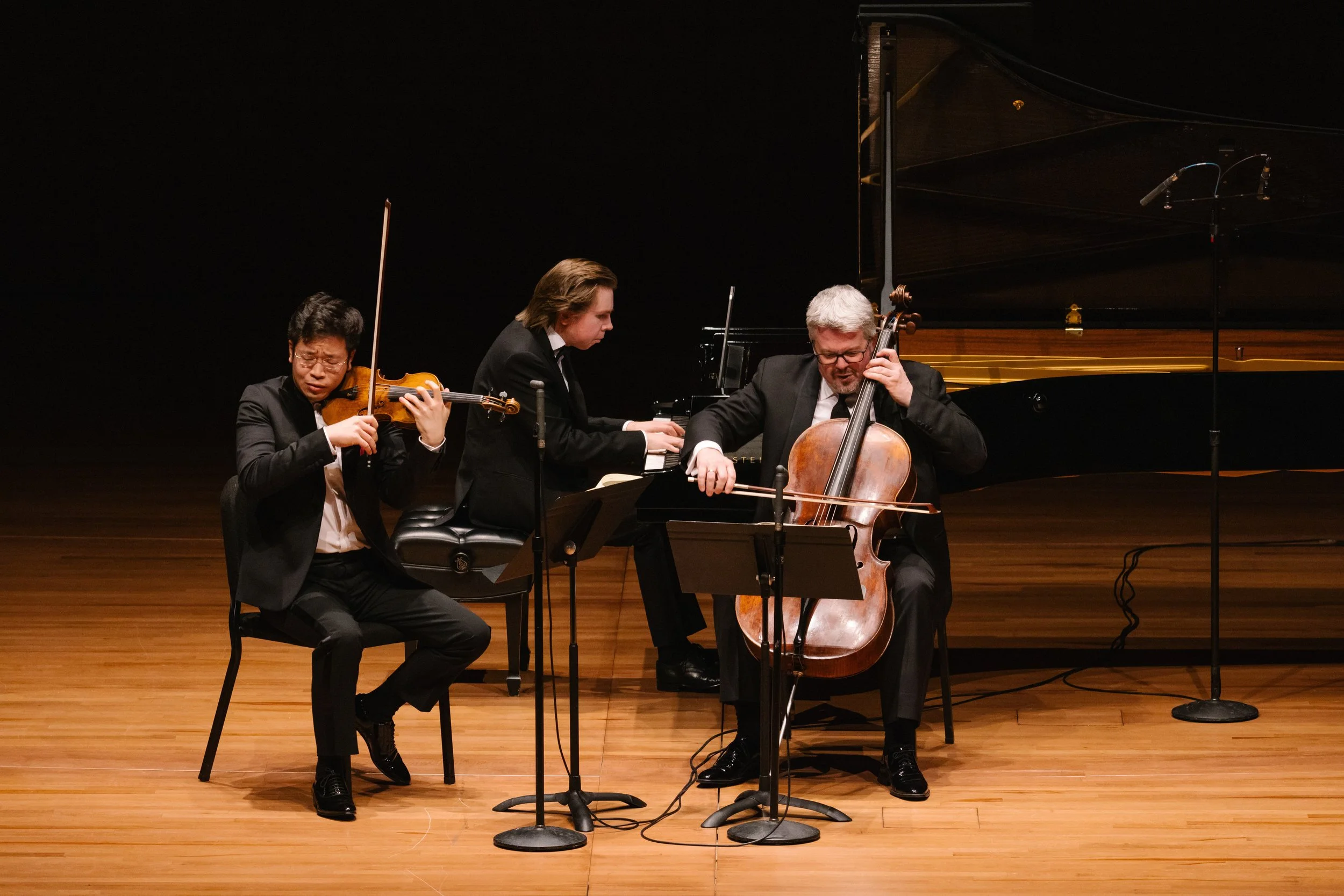REVIEW: 'Sturm und Drang' in Landmark Trios at CMS
Above: James Thompson, Michael Stephen Brown and Sihao He. Photo by Frank Impelluso.
November 15, 2023
Fanny Mendelssohn shared a bourgeois upbringing and musical education with her younger brother Felix, but in early nineteenth-century Berlin’s polite society, a woman simply did not pursue a career. This was a man’s world. She wasn’t even mentioned in Maurice Hinson’s canonical guides to piano and chamber music repertoire used as textbooks in many a conservatory.
At last, the musical canon (and the revised edition of Hinson) seems to be coming around. In NYC this Fall, major organizations are programming the work of many long neglected female composers (Mendelssohn, Clara Schumann, and Louise Farrenc, to name a few) whose work has existed in the shadow of their male spouses and siblings.
Fanny Mendelssohn, in an 1829 drawing by her husband, Wilhelm Hensel (1794-1861)
Chamber Music Society of Lincoln Center featured two such works in a concert of Romantic-era piano trios at Alice Tully Hall: Fanny Mendelssohn’s Trio in D Minor, Op. 11, written shortly before her death at the age of 41 in 1847, and Clara Schumann’s Trio in G Minor, Op. 17, written in 1846, amid health struggles for her and her husband Robert, and a year before he would write his own first piano trio. The program’s second half featured a ravishing reading of Johannes Brahms’ revised version of his Trio in B major, Op. 8, a pinnacle of the repertoire. It was an enlightening evening.
Thompson, Brown, and Watkins. Photo by Frank Impelluso.
One of the concert’s pleasures was sampling three different combinations of musicians. First up: Michael Stephen Brown, a pianist and composer of stunning skill and exuberant heart, joined by the impressive violinist James Thompson, and Paul Watkins, known to audiences as the Emerson String Quartet’s cellist in its final decade.
Mendelssohn’s Trio demands more virtuosity from the keyboardist than the strings. Brown dove into the Allegro motto vivace first movement’s fiery, racing accompaniment as if the urgent storm of notes were springing from an internal emotional struggle. The string players spun passion out of the silky, mournful melodic sighs suspended above the agitated piano torrent.
Thompson’s violin seems like an extension of his body and has a glimmering, plush sound, as he shapes phrases generously and gracefully. Watkins, the consummate chamber musician, plays with the adaptability of a chameleon, actively contributing to each moment with varying tone colors. Together, they performed like a long-established trio, perfectly in tune to each other’s instincts.
Brown’s orchestral imagination enhanced the second movement, Andante espressivo. If you had closed your eyes, you might have heard flutes playing staccato arpeggios, a French horn soaring on a juicy harmonic line, or tremolo strings on quivering chords. The third movement, Lied, could be mistaken for parlor music in a costume drama, elevated by the exquisite jewel-like playing from Thompson and Watkins. However, the Finale reveals the ambitious and innovative composer within Fanny, had she not been suppressed by the patriarchy. Brown, Thompson, and Watkins brought drive and momentum to the overall four-movement work, pacing the build to the finish with relish.
Clara fared better than Fanny in the fame department (and lived almost twice as long), as a busy concert pianist lauded by Chopin and Liszt. A key Romantic-era figure, she must have exerted great influence on both Robert and Brahms. While on paper, her piano trio appears workman-like, the evening’s second permutation of players proved it’s anything-but. Brown and Thompson reprised their roles, joined on the cello by Sihao He, who melded into the ensemble seamlessly, and contributed a reedy timbre touched with honey. A masterclass in the interpretation of Romantic music, this ensemble lifted the elegantly crafted notes off the page, carving from them an illustration of inner Sturm and Drang.
Huang, Pohjonen, and Watkins. Photo by Frank Impelluso.
The Brahms work that concluded the evening remains the most magnificent of the three — among the composer’s best. Paul Huang, on the violin, and Juho Pohjonen, assuming duties at the keyboard, were completed by Watkins on the cello. They began the first movement, Allegro moderato, at a bright tempo, setting an urgent pace for this large-scale work’s breadth of sensations. It’s symphonic in scope, yet structurally dense and rhythmically complex, with varied demands for each musician. Pohjonen transcended the piano part’s octave-heavy thickness, so that the first movement had soaring arcs. In the sentimental coda, when the opening theme returned in the cello, everything about it seemed different — we emerged from the development somehow changed.
The Scherzo, surely one of the most delicious pieces ever conceived for three players, glistened. Pohjonen achieved brittle repeated notes and biting dynamic surprises. Watkins poured his soul into the expressive tune of the Più lento Trio section, and when the melody spills up into the violin, Huang took the reigns with the same voice, and the effect was sumptuous. The quietly dramatic transition back to the prickly staccato of the scherzo was magical. Huang and Watkins conversed as a team, matching each other in pitch and color. The treacherous Adagio seemed frozen in time, like a distant, bittersweet memory. The finale was the perfect dessert: bracing and not-too-sweet.
***
Coming up: a Mozart Piano Trio (and Elgar’s Quintet) at CMS:








